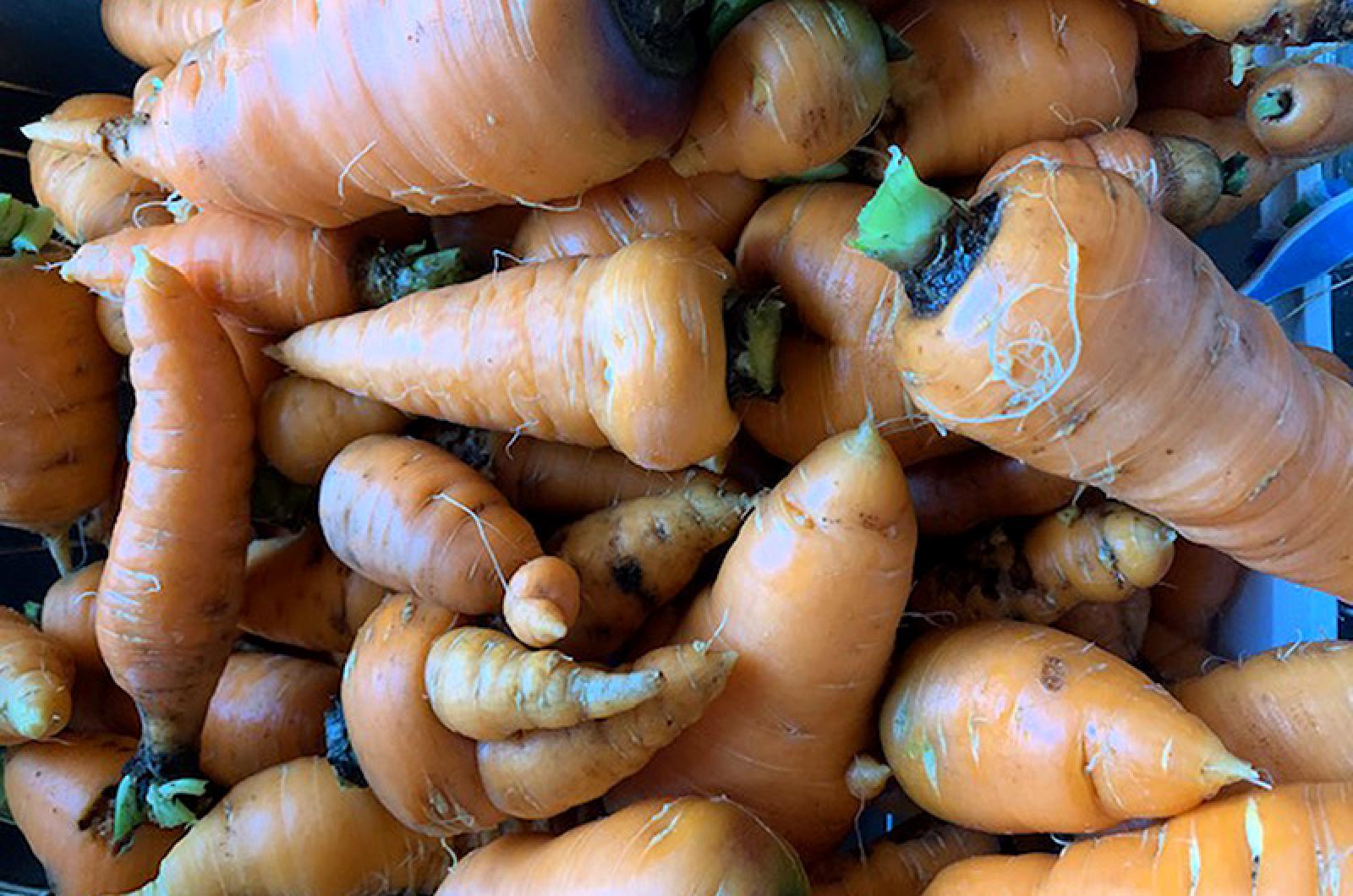Swipe left.
If my carrots were on the dating app Tinder, a potential suitor might quickly swipe left to move on to another photo. For those not familiar with Tinder, swiping left means not interested, an easy and anonymous no thanks.
Blame it on appearance. The carrots I harvested from my garden were short, stout, greenish on the top, hairy, crooked and forked. I had quite a selection of misshapen munchies that didn’t align with the supermarket version of the thin, straight, “perfect” form.
My initial reaction was that of self-deprecation. What did I do wrong? I searched the literature, Googling, stout, misshapen, forked, hairy carrots and found a bounty of information and advice.
There are many things can cause carrot fail. Soils are one. Carrots prefer airy, loose and somewhat sandy soils. Rocks and dense clay-laden soils can cause splitting and malformation. Overcrowding can be detrimental to their growth, and might have been the case in my garden, since I am squeamish about thinning the plants. Another soil issue is nutrients — too much compost or nitrogen makes the soil too rich for the carrots, which can lead to forking. Insects can also be problematic, boring and chewing into these root vegetables. Nematodes or worms cause root galls or swellings and produce excess hairs that make the carrots resemble Cousin It. Another problem, called aster yellows, is the result of a bacterium in the soil and spread by leaf hopper insects, and leads to tough, off flavor, and yellowy carrots.
The greening of the carrot tops, I learned, is called green shoulders and occurs from their exposure to the air and the resultant photosynthesis. The simple solution is to cover those shoulders with soil to keep them protected from the sun.
While some of these conditions were in play, my carrots cleaned up well and tasted quite good. Turns out you can’t judge a book by its cover.
Beauty, too, being only skin deep, one has to look to variety also. Those supermarket stock carrots are of the Imperator or Danvers variety, while mine were heirlooms called Chantenay which tend to be shorter and rounder. Aha! The carrot conundrum was solved.
Lean, large and lanky are just not my thing when it comes to carrots and I am good with that. Thus, I will never be like Englishman Basil Brown, who is all about size, and holds the records in carrot length at 19 feet, two inches, and weight with one at 18.98 pounds. I always contend that small is beautiful.
No matter my or your preference, it turns out that my carrots were just right and definitely delicious. The Old Farmers Almanac provides this encouragement: “Don’t expect the perfect shape of grocery store carrots. Your carrots will still taste better, whatever their shape!”
So, in the end, remember that whether dating or growing carrots, be open to all shapes and sizes. Celebrate differences and remember it’s what’s on the inside that matters.
Suzan Bellincampi is director of the Felix Neck Wildlife Sanctuary in Edgartown, and author of Martha’s Vineyard: A Field Guide to Island Nature and The Nature of Martha’s Vineyard.




Comments
Comment policy »